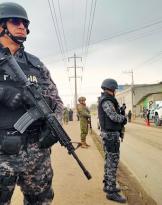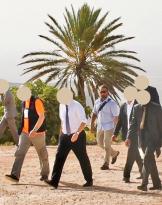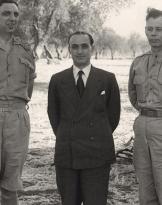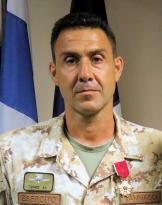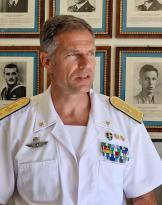With a new Law Decree (under preparation) the Executive would like to move the 766 million euros allocated for the development and acquisition of the new Piaggio Aerospace P.2HH drone on a program focused on updating 19 aircraft P .180, the purchase of 10 new P.180 EVO for the Public Administration, as well as the completion of the certification of P.1HH to then acquire, in the short term, two complete systems of 2 GCS (Ground Control Station), plus two more in the medium term.
Especially on the Piaggio drone that has recently focused attention on the part of the Government and military leaders in order to evaluate the continuation of the project, after the abandonment by the Arab partner Mubadala, Sovereign Fund of the UAE, which had invested around one billion euros to bring a certain number of aircraft to this technological level.
Just the P.1HH represents the product with the highest technological content of all the industrial component of the Piaggio Aero Industries.
In fact, for the design of P.1HH, all the remoting elements have been added to the systems deriving from P.180, such as the on-board digital system and the systems datalink for the transmission (in line of sight and satellite) of the command and control signals, the mission system and the command and control station of earth (GCS).
On the basis of these characteristics, the P.1HH system of Piaggio Aerospace was chosen by the U-Avitalia company, united in RTI with Piaggio and Bcube, to contribute fruitfully to the call for research and development announced by ENAC to demonstrate the concept of a Cargo Plane with Remote Piloting.
 With this project, the parent company of RTI U-Avitalia has put in place a large national project for the use of SAPR platforms and systems for civil use in non-segregated airspace and Piaggio will carry out, thanks to ENAC which will work with EASA, the necessary experimentation to then obtain from the European Security Authority the Certification foreseen for the Category, precisely named Certified, to fly in non-segregated airspace: the latter which also affects military vehicles that must carry out operations outside the corridors military.
With this project, the parent company of RTI U-Avitalia has put in place a large national project for the use of SAPR platforms and systems for civil use in non-segregated airspace and Piaggio will carry out, thanks to ENAC which will work with EASA, the necessary experimentation to then obtain from the European Security Authority the Certification foreseen for the Category, precisely named Certified, to fly in non-segregated airspace: the latter which also affects military vehicles that must carry out operations outside the corridors military.
Online Defense interviewed the president of U-Avitalia, Donatello Gianni, who explained the possibilities of using P.1HH in the civil field.
Should P.1HH be pushed like a military aircraft or should it be civilized to have a market?
We must enter into a dual sphere: I deal with duality from the 2006. As often happens, technologies are born in the military sphere and then expand into the civil one. We are concerned with the civilization of this medium, and if it has military applications, it is not about our business.
Probably the military leaders have recognized that P.1HH does not meet the requirements for use, according to the parameters of the Italian Air Force.
By June 15 the Government will decide the number of machines to be acquired and the administrations to which they will be destined.
This is the only aircraft that has the technological requirements to be able to fly inside segregated spaces and civil use would be, in our opinion, the best way to use it.
For example, one of the most interesting uses is to monitor the entire southern Mediterranean area, in support of the Frontex operation.

When the ENAC launched the project of a cargo drone for civilian use, our company U-Avitalia, contacted Piaggio to verify the feasibility of such a use with their P.1HH.
The next phase concerns the experimentation, in which to demonstrate the possibilities of application of the drone's capabilities in the civil sphere, simulating a scenario in which the aircraft carries a (simulated) load of 500 kg.
However, with P.1HH, we started with a military cell that could rely on military infrastructure.
The program foresees that the P.1HH has a civil flight permit, ENAC will provide the support structures. The best solution would be to use the aircraft from a civilian airport with the appropriate facilities to support it.
We are thinking of civil corridors (dynamic corridors) that open and close according to the requests, in agreement with the Air Force. The air rules are not changed are the drones that must be adapted to the ENAC rules.
There is a great increase in air traffic worldwide, the only thing that grows in the world and consequently also spending: the use of a dynamic corridor would be a viable solution.
A drone, once matured, should be safer than a piloted aircraft.
Would the control of the drone be remote or completely automatic?
Human control is still present (in the GCS one or more operators may be present). From a study carried out, the costs with the use of remotely piloted aircraft (where the stress factor is reduced) would be reduced by around 35 billion a year.

IThe P.1HH is however designed to become completely automatic, even if the automatic take-off (still being set up) has not yet been tested in the tests, the landings were managed without human control, without any malfunction.
The most complex part that had to be modified were the actuators, that is the systems that command the lowering or raising of the ailerons (built exclusively by the Israelis).
To obtain a quality product, in the field of remote piloted aircraft, it is necessary to be competitive on the market: we are far ahead.
Technologies that apply to drones have existed for many years in the civil field.
They have existed for a long time, unfortunately this shows that the lack of ability to experiment can lead to aerial disasters, as in the recent case of the precipitated Boeing. Despite the concerns inherent in a remotely piloted aircraft, it is good to remember that in modern aircraft with onboard piloting, the human component is reduced to a minimum.
The same military aircraft are all managed by Artificial Intelligence, in case this should crash, despite the presence of the pilot, the aircraft would be unmanageable.
Regarding the training of pilots, will we still rely on a military structure?
Pilots, in general, are born in the military after which they are taken by the companies and transferred to civilian areas.
Piaggio, in particular, has acquired military pilots and hired them, however the future will be the creation of a specific flight school for piloting aircraft remotely.
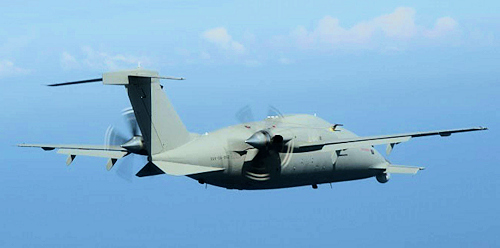 The control centers (GCS) of how many operators need?
The control centers (GCS) of how many operators need?
The GCS has two main operators involved in navigation and sensors. Two others manage a possible second aircraft (a GCS can control two aircraft at the same time), plus another operator that would control a possible aircraft in transit.
Given the number of pilots used from the ground for an aircraft, could the cost / benefit ratio not be counterproductive in the end?
The argument is that the operation of these subjects is far superior to that of an onboard pilot, subject to a much higher mental and physical stress.
Moreover, the rest shifts would be eliminated, superfluous for pilots who would find themselves operating from the ground.
Regarding medical transport, abroad there is talk of using small drones to perform these tasks.
These are small drones that carry drugs or bags containing blood and perform a function in a specific predetermined scenario, with low intensity of human presence, and in any case are rotary-wing machines. We are experimenting on fixed-wing machines.
What about the possibility of transporting people, a sort of flying taxi?
With this project we do not address this topic. The technological profiles are very different: we are talking about aircraft that are driven by endothermic engines.

Our study shows that technologies exist, that they are mature, with remarkable security capabilities. After that it is the customers who tell us what they need for their business.
Piaggio does not produce any platforms or GCS, what it has managed to do is modify an existing system such as P.180 NEXT. Their know-how regards the ability to convert existing machines, thanks to the presence of a large number of design engineers.
What would be the economic advantages of using a drone for freight transport?
A possible use could occur in critical areas (such as war zones), where the presence of a pilot on board would be too risky; those in which timing is essential, such as drugs or human organs. There are countless applications where the use of drones would be more convenient than human-powered vectors. Although the medical field is the one that attracts the most attention, even the transport of consumer goods (through online purchase) finds optimal use in the drones.
Photo: U-Avitalia / Online Defense




